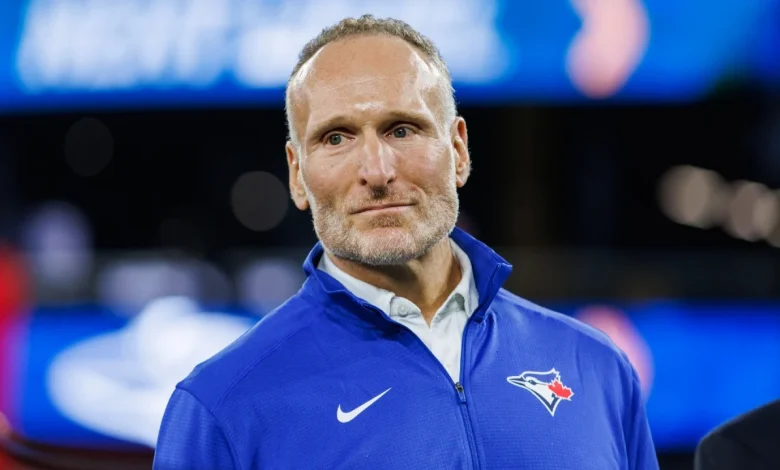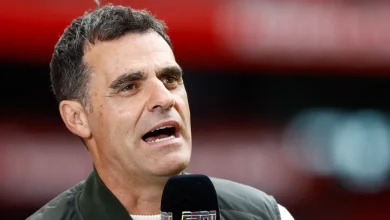World Series run gives Blue Jays chance to rise as MLB power

TORONTO – To fully grasp both the reach and power of the 2025 Toronto Blue Jays, consider the empirical evidence provided by the Canadian broadcast numbers for Game 7 of the World Series — an average audience of 10.9 million, peaking at 14 million, with 18.5 million viewers watching at least some of the contest.
Those are astonishing figures, and at a time when there’s no steady counterweight to the two-time defending champion Los Angeles Dodgers, who won the gripping finale 5-4 in 11 innings, the key question facing the Blue Jays is how to seize upon the moment left in the wake of a remarkable 2025 season.
For a front office that’s long cast an admiring eye toward the organizational machine the Dodgers have built under president of baseball operations Andrew Friedman, this is no fleeting matter. Much like the way Friedman brought over the Tampa Bay Rays’ operating system and turbocharged it with the benefits of the Los Angeles market, the Blue Jays may finally be doing the same thing with the Cleveland model and Toronto’s resources.
Now, for the first time since Mark Shapiro took over as president and CEO following the 2015 season, there’s a real, compelling proof of concept for what that looks like and the success it can produce. The Blue Jays no longer need the prime free agents they’ve tried to lure north to imagine how good it would be not just to grab a wild-card spot but to really win here. They can actually show them.
How much that flex helps is to be determined. But there’s a big difference between pitching a concept off a vision board versus selling something tangible.
So, if the Blue Jays are intent on building a northern powerhouse, as their pursuit of Shohei Ohtani and Juan Soto the past two winters would indicate, their World Series run and the way their players spoke of their experience this season opens a unique window.
That’s why this winter is the Blue Jays’ most significant opportunity since 2015-16, when a run to an AL East title and an eventual six-game loss to the Kansas City Royals in the ALCS rekindled a similar national passion for the team and the sport.
Back then, for a number of reasons, they didn’t fully capitalize upon it amid a transition in senior leadership — with Shapiro taking over from the retiring Paul Beeston, the departure of GM Alex Anthopoulos and the arrival of Ross Atkins as his replacement — along with a need to modernize the organization’s business structures.
Combined with valid concerns about an aging core, the Blue Jays had a cautious off-season, making only some short-term commitments that produced another ALCS run in 2016 before a steady decline into the rebuild that led to the current group.
All of that is vital context, as there are a number of loose parallels between 2015 and 2025.
Perhaps the most significant one is Shapiro, like Beeston, working on an expiring contract, although this time around, no change is expected and it’s possible an extension for him is announced soon.
Also playing out differently is that on the business side, the Blue Jays’ Rogers Centre renovations completed for the 2023 and ’24 seasons, combined with the previous shift to dynamic ticket pricing, ensured this post-season run was leveraged far more effectively than those of 2015-16.
And locked into the roster now is superstar slugger Vladimir Guerrero Jr., whose monster playoffs came just as his $500-million, 14-year extension kicks in next season and he heads into what should be the peak years of his career.
All of which makes the free agency of Bo Bichette a fascinating stress test for the Blue Jays.
Like Guerrero, the star shortstop has been a franchise cornerstone over the past six years, and heading into his age-28 season next year, his peak is just about to arrive. The will and mettle he showed in sliding over to play a new position on what was essentially one leg in the World Series was remarkable, and had the Blue Jays closed out Game 7, his third-inning drive off Ohtani might be atop the club’s pantheon of greatest home runs.
There are some things beyond terms to figure out — beginning with the idea of him sticking at second base to reduce the wear on his body, with Andres Gimenez staying at shortstop. But assuming that works itself out, and taking Bichette at his word about wanting to finish his career with Guerrero and for them to win together in Toronto, there’s plenty of common ground for something to work out.
Free agency can be wild, of course, giving other teams a chance to disrupt the relationship. The Blue Jays, also, have made discipline to their processes a foundational value in their operations, which is how they earned the leeway from ownership they currently have, which means they’ll have a walk-away point. So, too, will Bichette.
The Dodgers have parted with some prime talents in recent years — Corey Seager and Cody Bellinger, prime among them — without missing a beat, confident in their ability to develop or acquire suitable replacements to bolster the roster.
Maybe the Blue Jays can similarly replicate that uninterrupted success, but there’s also value for clubs in retaining their top homegrown talents.
That holds especially true with Bichette as a baseline four-win player, whose offensive game embodies all the traits valued by the organization, whose impact beyond the field was clear throughout the season.
His status alone, of course, won’t resolve the many questions on the roster, as the rotation is a priority right there alongside him. Bolstering the bullpen will be necessary, too, and there is some depth at both ends of the pitching market.
Combined, that’s some heavy lifting, sure, but in capitalism, anything is possible, even if some times are more opportune than others.
As a team projected to finish this year just above the third luxury-tax threshold of $281 million, coming off a World Series run that could have doubled as a marketing campaign for life with the club, there may be more receptiveness in the marketplace than ever for the Blue Jays’ financial might.
A decade ago, they weren’t in a position to fully take advantage of a similar opportunity. Better positioned to do so this time around, they can’t let this chance slip away.





